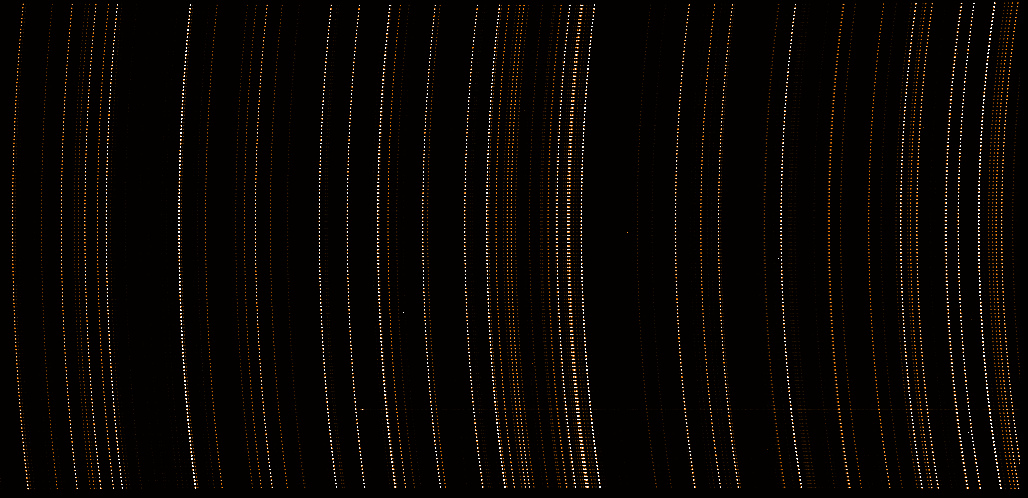The GIRAFFE Spectrograph
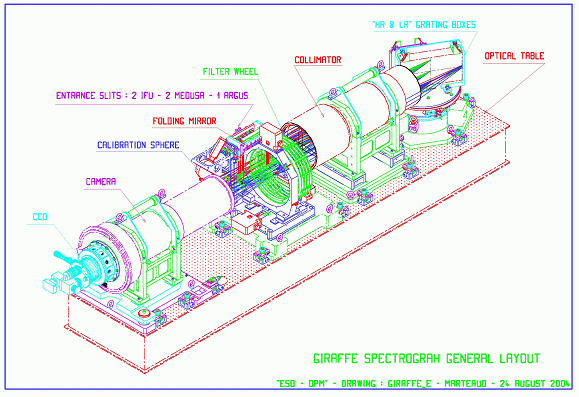 GIRAFFE is a medium-high resolution (R=5500-65000) spectrograph for the entire visible range 370-900 nm. GIRAFFE is aimed at carrying out intermediate and high resolution spectroscopy of galactic and extragalactic objects having a high spatial density. The name comes from the first design, where the spectrograph was standing vertically on a platform. GIRAFFE is equipped with two gratings: high and low resolution.
GIRAFFE is a medium-high resolution (R=5500-65000) spectrograph for the entire visible range 370-900 nm. GIRAFFE is aimed at carrying out intermediate and high resolution spectroscopy of galactic and extragalactic objects having a high spatial density. The name comes from the first design, where the spectrograph was standing vertically on a platform. GIRAFFE is equipped with two gratings: high and low resolution.
The grating setups are available in the following links for High Resolution (HR) and Low Resolution (LR).
The two gratings are mounted back to back on a turn-table. Filters are used to select the required spectral range. Each object can be only observed in a single echelle order at once.The light comes from one of the 6 available slits and passes through the order sorting filter. It is then reflected into a double pass collimator and goes to the grating. After an intermediate spectrum is formed, the light is finally re-imaged on the CCD. The spectrograph aperture is F/5 and the beam is 18 cm, i.e., 1.2 arcsec on the sky corresponds to 6 detector pixels. Different wavelengths are obtained by scanning the grating along its rotation axis.
GIRAFFE is equipped with a 2k x 4k EEV CCD (15 µm pixels). The spatial scale is 0.3 arcsec/pixel in MEDUSA, IFUs and ARGUS direct mode. In the enlarged ARGUS mode, the spatial sampling is 0.15 arcsec/pixel. The CCD was provided by the ESO Optical Detector Group.
The GIRAFFE spectrograph and fibre system was developed by the Observatoire de Paris-Meudon (P.I. F. Hammer) and Observatoire de Geneve (P.I. A. Blecha), in tight collaboration with ESO. ESO-Garching is actively responsible for the instrument control electronics hardware and software, the cryogenic system and the detector system (FIERA). The GIRAFFE integration started in ESO-Garching in spring 2001.
Pictures of GIRAFFE (click on the picture to get a higher resolution image)
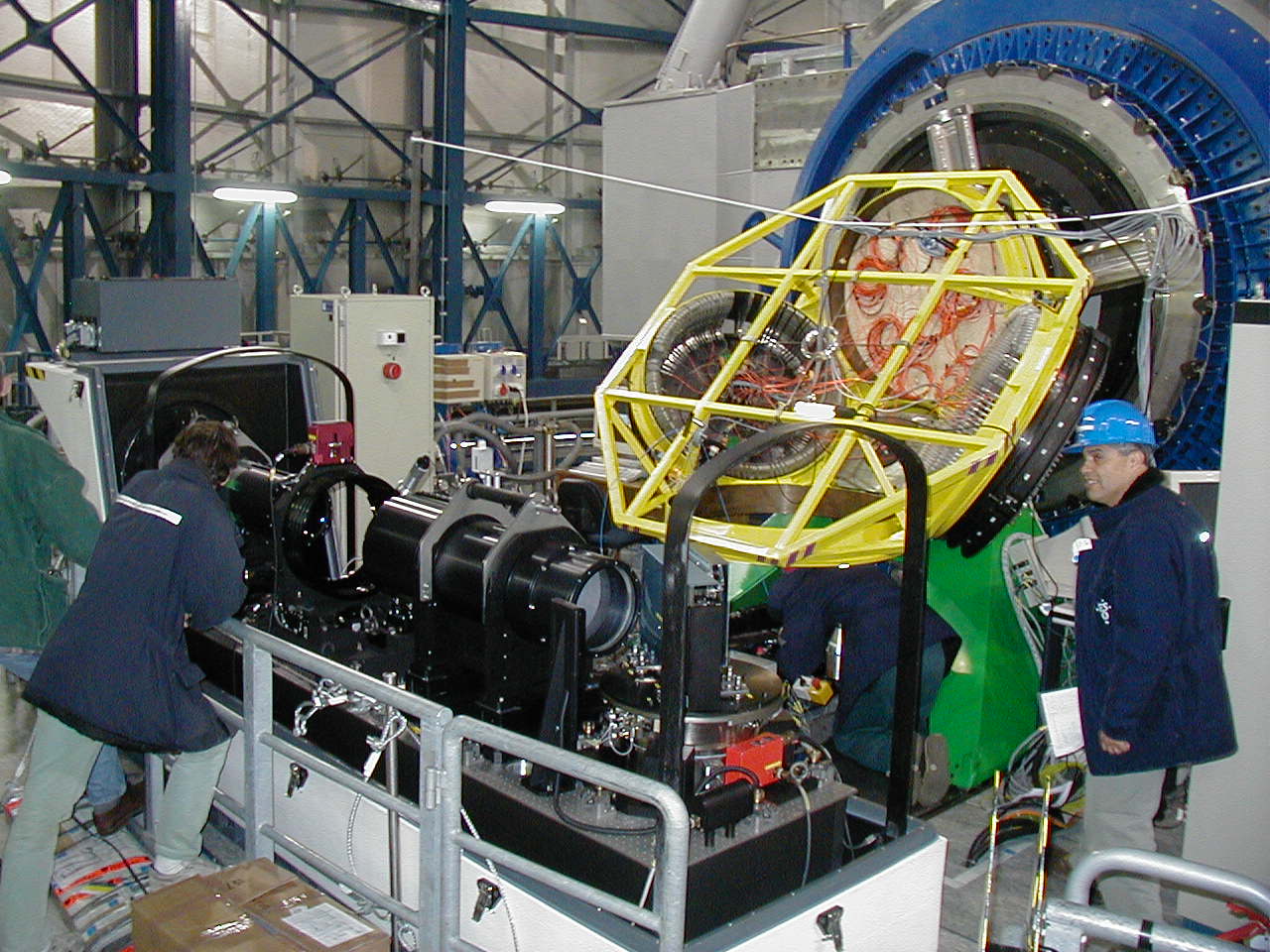 Caption: View of the GIRAFFE spectrograph with OzPoz. |
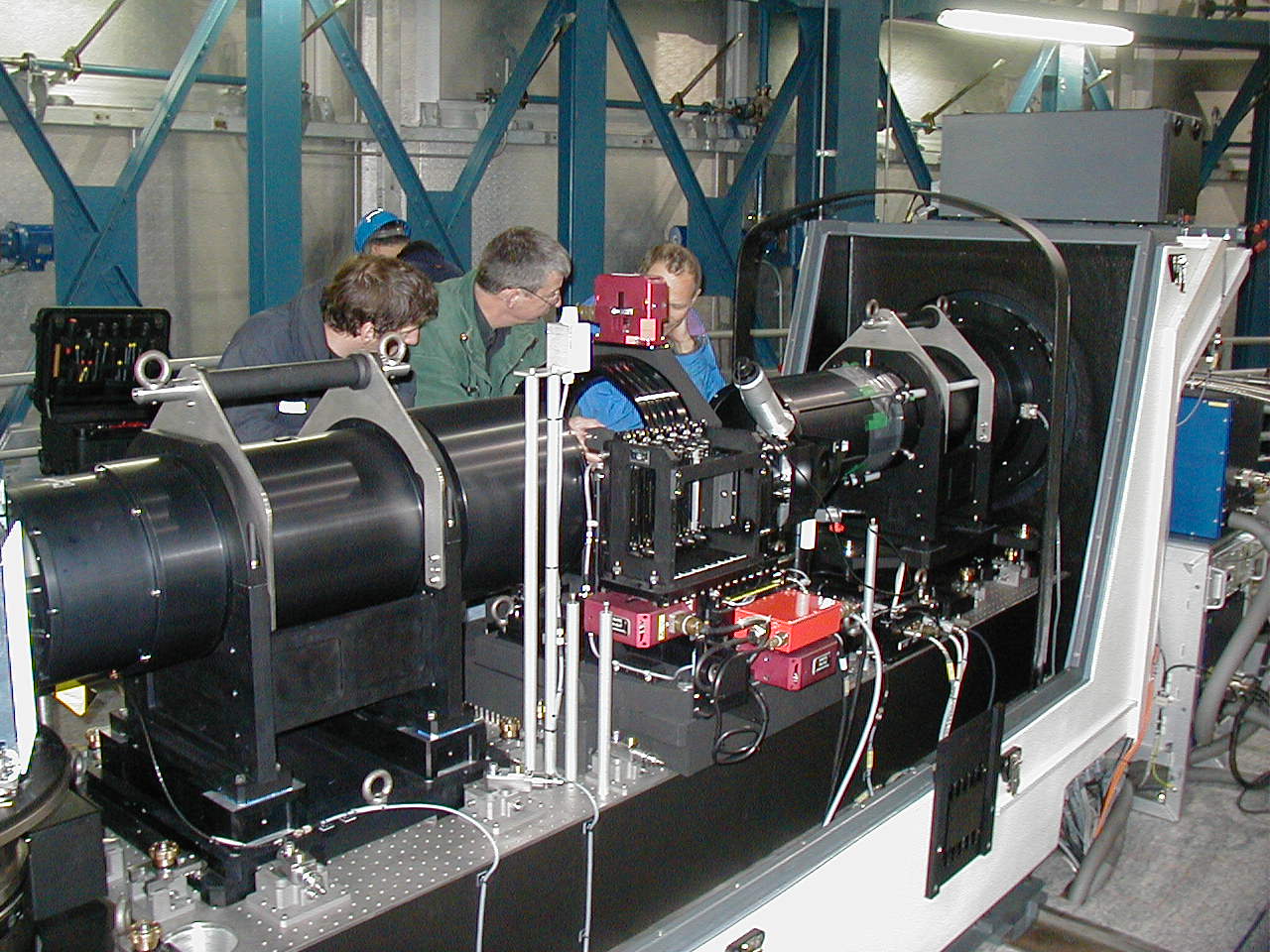 Caption: Another view of the GIRAFFE spectrograph. |
A Fiber fed system
The Fiber system feeding GIRAFFE consists of the following components:
- 2 MEDUSA slits, one per positioner plate
- 2 IFU slits
- 1 ARGUS slit
- 1 Long slit for maintenance purposes
MEDUSA mode
Up to 132 separate objects (including sky fibres) can be observed simultaneously in the MEDUSA mode. In this mode, each fibre has an aperture of 1.2 arcseconds on the sky.
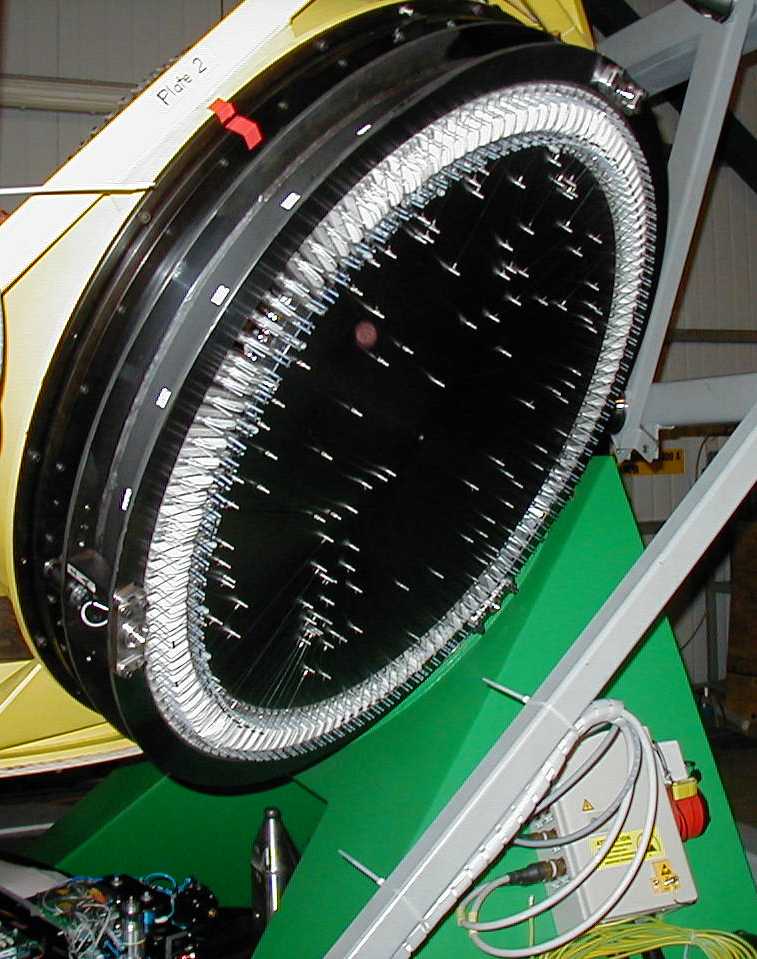
Caption: View of the back of one OzPoz plate where all the fibres are attached with magnetic buttons.
IFU mode
Each IFU consists of an array of 20 square 0.52-arcsec microlenses. The total aperture is almost square (see figure below).
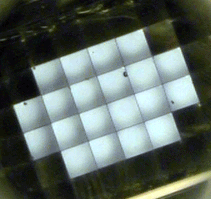
Caption: IFU array of 20 square microlenses
ARGUS mode
The ARGUS array is a rectangular array of 22 by 14 microlenses (see figure below) which is fixed at the center of one positioner arm. Two spatial scales are available:
- a sampling of 0.52 arcsecond/microlens and a totalaperture of 12 by 7 arcseconds
- a sampling of 0.3 arsecond/microlens and a total coverage of 6.6 by 4.2 arcseconds.
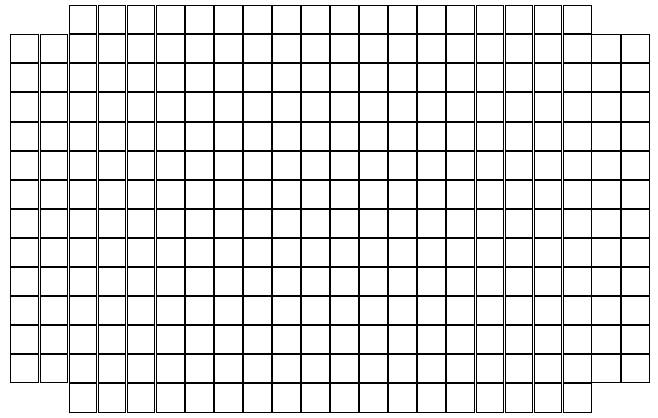
The GIRAFFE Setups
The whole spectral range of GIRAFFE is covered in 32 predefined setups: 24 setups for high resolution and 8 setups for low resolution.
- List of the setup for the high resolution mode with 316 lines/mm grating
- List of the setup for the low resolution mode with 600 lines/mm grating
The expected S/N for a G2V star has been calculated taking into account the VLT+GIRAFFE performances, a seeing of 0.8 arcsec and a decentering of 0.0 arcsec. A link to theGIRAFFE Exposure Time Calculator can be found here .
CCD manual
The manual of the optical detector system for GIRAFFE is available here:

